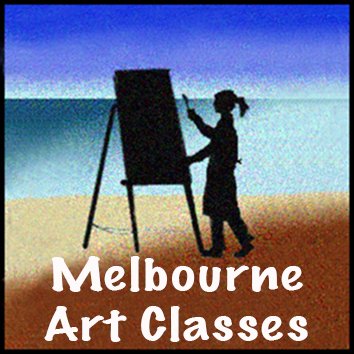VALE CONTRAST - AND OTHER FORMS OF CONTRAST
VALUE CONTRAST- What happens when the darker darks are
juxtaposed against the lighter lights? The contrast draws the eye
like a magnet. Although there are other forms of contrast in visual art,
none seem to be as compelling visually as a strong value contrast. On
the right is an artwork executed in the chiaroscuro method of using
extreme value contrast.
Other contrasts include:
COLOUR CONTRAST- in hue, temperature, or intensity. A power struggle
results when hues are equally intense or equal in temperature
(avoid warm = cool ). One needs to dominate (or the eye doesn’t know where to look or the brain how to feel.) This guideline is true in all aspects,ie. avoid equal intervals or measures of tone, temperature, space, line etc (Some rules are made to be broken but you need to know them first!)
CONTRAST IN COMPLEXITY- Detail, texture & pattern are more exciting next to areas of simplicity. A painting definitely benefits from areas of relative quiet or neutrality. An abstract artwork benefits even more from sophisticated marks, textures and variances/ contrasts since it is engaging the viewer’s mind in a less figurative/representational way.
CONTRAST IN LINE- When a minimum of diagonal or vertical lines are added to an entirely horizontal scene, the energy level is dramatically increased. (learn the different meanings of the word line eg. Mathematical line, implied line, boundary line, psychic line.)
RHYTHM & MOVEMENT
Compare music and visual art (music exists in time and visual art in space) Both have: Intervals, tone, rhythm, movement, tempo, crescendos etc.
Lines through space can be created by edges of contrasting value or temperature, applied lines of objects, and varying the edges enhances the rhythm in an image.
Some visual artists use music almost exclusively to inspire their compositions.
HARMONY & DISCORD
Some artists use repeated colours and shape concepts throughout to create a harmonious rhythm, often combined within an analogous scheme.
Other artists purposefully create anywhere from mild to outrageous discord in their works with exaggerated contrasts in colour, tone, line, form, textures etc.
MOOD
FORMAT - eg. Vertical = emphatic, Spiritual
Horizontal: restful, expansive
Tips for setting a mood
* Planning purposeful and cohesive colour schemes, under-painting to contrast, use a key colour throughout helps to homogenize.
* Lost & soft edges create interest
* Is it part of the shadow mass or the light mass? Minor variations in temperature or value can add interest or define form but harmony is best served when light masses or shadow masses are held together.
* consistent handling of shapes can maintain a calm mood
*strong tonal contrast and other forms of contrast can create drama
COLOUR – muted colours are elegant, subdued, sombre, mysterious
BRIGHT COLOURS - cheerful, aggressive, passionate, dynamic, wild
DEEP SHADOW- eg, chiascurro>>> drama, seriousness,
tragedy
Just as a musician selects a key in which to compose, so an artist needs EDGES- Crisp Edges: action,
to control colour to his/her own end. Colour palettes, if not planned vitality
knowingly and carefully can provide a visual circus of over-stimulating Soft Edges: slow action, provide a
colour or worse still..... dull mud. sense of mystery

